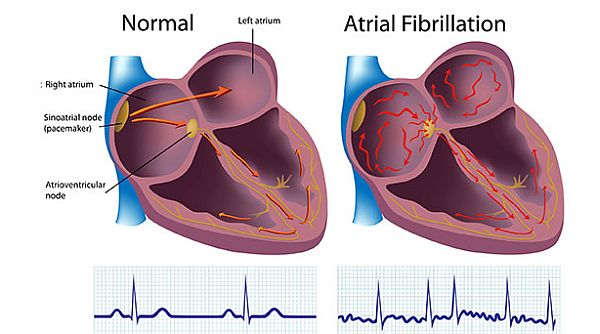Julie Fidler – Atrial fibrillation, or AFib, affects between 2.7 and 6.1 million people in the United States. Approximately 9% of people over the age of 65 are afflicted with this heart condition. [2]
AFib is the most common type of heart arrhythmia. The disorder occurs when the heart beats too slowly, too quickly, or in an irregular way, and the blood doesn’t flow properly from the atria to the lower two ventricles of the heart. It can be an off-and-on occurrence, or it can be permanent. [1]
 People with AFib may feel shortness of breath after minimal physical activity. They may experience heart palpitations that feel like the heart is beating too slowly, or like it is flip-flopping, skipping beats or racing. The symptoms of atrial fibrillation can also feel like having butterflies in your chest, or like your heart won’t stop pounding.
People with AFib may feel shortness of breath after minimal physical activity. They may experience heart palpitations that feel like the heart is beating too slowly, or like it is flip-flopping, skipping beats or racing. The symptoms of atrial fibrillation can also feel like having butterflies in your chest, or like your heart won’t stop pounding.
Just because you don’t feel the symptoms of AFib doesn’t mean you don’t have the arrhythmia, and it doesn’t mean you can’t suffer the consequences of the disorder. About 750,000 people are hospitalized with atrial fibrillation every year in the U.S., and it contributes to more than 130,000 deaths each year.
This medical condition increases a person’s risk for stroke by 4-5 times compared with people who don’t have AFib. Over the past 20 years, the death rate from AFib as the primary or contributing cause of death has been rising steadily. [2] Continue reading
